Emilie Richards's Blog, page 70
May 14, 2016
Sunday Inspiration: The Right Path
Do you sometimes find it’s so much easier to judge others than to see into their hearts?
I think we all do. But finding the right path for myself is difficult enough — and an ongoing challenge — and to presume that I can determine the right path for another is a big stretch.
In my personal life and during this time of painful tension in our country, I hope to be more patient with those I love — and those I don’t love as much or even at all. I hope to be kind in the face of unkindness, patient in the face of impatience, while still standing up for the things I believe.
How are you doing on this difficult journey? What inspires you to stay on the road?
The post Sunday Inspiration: The Right Path appeared first on Emilie Richards.
May 10, 2016
When We Were Sisters: Kris Speaks
Kris Lenhart: Last week we heard from Robin. This week we’ll hear from her husband Kristoff Lenhart. Kris and Robin are at a crisis point in their marriage, and when Robin leaves to film a documentary with her foster sister, Cecilia, Kris has to look back on his life to evaluate the man he has become and why. Here are some of his thoughts.
***
In Kris’s Own Words:
 Childhood Memories: My first memory? I was young enough to be in a crib but old enough to resent it. I remember pulling myself up and gazing over the bars at my parents and sister sleeping just a few feet away, my parents on a pull-out sofa and Lucie on a blow-up mattress beside them.
Childhood Memories: My first memory? I was young enough to be in a crib but old enough to resent it. I remember pulling myself up and gazing over the bars at my parents and sister sleeping just a few feet away, my parents on a pull-out sofa and Lucie on a blow-up mattress beside them.
The smell in the one-room apartment was familiar throughout my childhood. Cooked cabbage. Onions. Lilac toilet bowl freshener because inevitably there were problems with our plumbing. The smell of my father’s work clothes.
My parents and sister emigrated from Czechoslovakia in the spring of 1969 after the Communists instituted full censorship and ended free speech. They left with nothing, and we had nothing for many years.
Financial security became something of an obsession, which Robin has pointed out to me on numerous occasions. She has exaggerated my lack of involvement in our family, built it up until it’s an insurmountable wall between us. But maybe the difference is this. She had nothing and there was nothing for a girl in foster care to have. My family could have had so much more if my father had put income above art and politics. But both are holy to him in a way that God and possibly family are not.
***
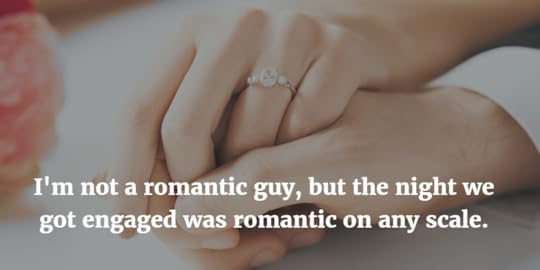 Falling in Love: I’m not a romantic guy, and I’ll admit it. Real romance for me is taking care of my family, working late to be sure I’m providing well enough, and being there for them whenever I can. But the night we got engaged was romantic on any scale. After the meal we went upstairs and stayed overnight in a lovely old hotel. By then she’d already said yes, but I made certain she was glad she had.
Falling in Love: I’m not a romantic guy, and I’ll admit it. Real romance for me is taking care of my family, working late to be sure I’m providing well enough, and being there for them whenever I can. But the night we got engaged was romantic on any scale. After the meal we went upstairs and stayed overnight in a lovely old hotel. By then she’d already said yes, but I made certain she was glad she had.
We also had a rare heart to heart. I told her that I knew she might want to work, but I hoped she would find a job with less danger associated with it. I also silently hoped that when we decided to have children, she would only stay home with them.
The next weekend I took her to meet my family. She loved them immediately, and particularly loved my father. As a photographer she understood Gus, an artist, as I never had. More than that, she loved that we were a family, something she had never really known.
I’m not sure I understood, but I grew to with time. Robin was badly cheated, and there was a hollow well inside her that needed filling with love, security and acceptance. When she told me that she, too, wanted a real home and a family she raised herself, having missed both, I was sure we had been made for each other.
***
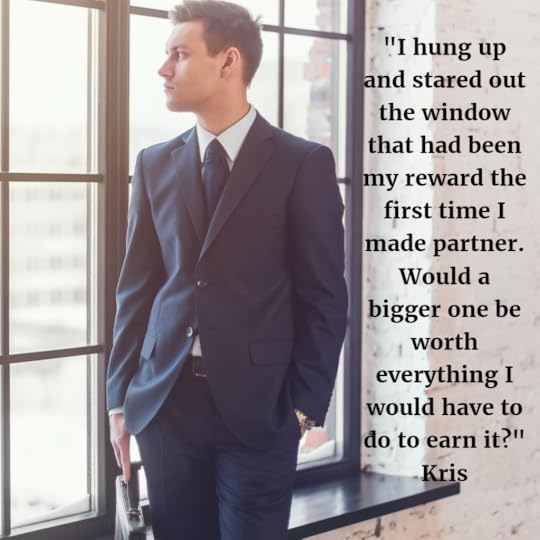 My Job, My Life: When I started law school I was idealistic. I thought I would always be on the right side of every issue, that doing a job I felt so good about would be fun and energizing, and when I came home I would be ready to fall back into my family.
My Job, My Life: When I started law school I was idealistic. I thought I would always be on the right side of every issue, that doing a job I felt so good about would be fun and energizing, and when I came home I would be ready to fall back into my family.
That didn’t turn out to be true.
Life would be great if everything we did was fun. It’s not. I’m not having fun at work, but I’m going into the office anyway.
I can’t do more than I’m doing. I told Robin that on the telephone, the night I had to back out of my commitment to take care of the kids so she could attend her monthly dinner with our neighbors. I had planned to come. But something came up at work, a client I couldn’t slough off, and I had to stay in town to entertain him.
She should have lined up a babysitter just in case I didn’t make it home. I don’t know why she didn’t.
She says she didn’t because she trusted me to keep my promise.
I hung up and stared out the window that had been my reward the first time I made partner. Would a bigger one be worth everything I would have to do to earn it?
***
I hope you’ve enjoyed this peek into the lives of the characters in When We Were Sisters. While I write these for myself, I enjoy sharing excerpts with you.
Next Wednesday: Cecilia, Robin’s sister.
Click here for bookstore links.
The post When We Were Sisters: Kris Speaks appeared first on Emilie Richards.
May 7, 2016
Sunday Inspiration: What forgiveness is and isn’t…
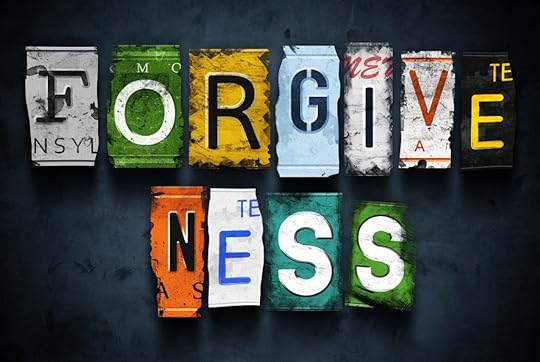
Happy Mother’s Day to all the mother’s out there. I hope your day will be filled with joy, love, and … forgiveness.
What better gift to give and receive on Mother’s Day — or any day — than the gift of forgiveness. Families are filled with joy and love, but often, as some commenters pointed out last week, with tension, friction, and anxiety as well. If your family is like everybody else’s, including my own, people often step on each others toes — or feet — and the disagreements can quickly turn into arguments and hurt feelings. Sometimes resentment can last a few minutes and other times a lifetime.
The expectations of mothers can be especially high and unreasonable. Mothers are supposed to be all things to all people, and when they fall short, or at times fall flat on their faces, some family members may take it personally and hold on to their anger.
What happens when family members don’t learn how to forgive? The joy may fizzle out, the love unravel, the support and encouragement fade away.
But forgiveness can feel impossible to many people, as the therapist Dr. Andrea Brandt points out in an excellent Psychology Today article “How Do You Forgive When It Feels Impossible.” Take a moment and read it.
What makes forgiveness seem so impossible is that most people don’t really understand what it is and what it isn’t. For instance:
Forgiveness isn’t accepting other people’s harmful actions.
Forgiveness isn’t having to ignore your own anger and pain.
Forgiveness isn’t forgetting what has been done to you or someone you love.
Forgiveness isn’t the expectation that everything will now be fine.
Forgiveness isn’t something you do for someone else.
What is forgiveness then?
Forgiveness is the opportunity to communicate our pain and anger to the person who hurt us but in a non-retaliatory way.
Forgiveness is challenging the harmful actions of another and asking for a change in their behavior.
Forgiveness is remembering what has been done to us, but making the decision to try to care about the one who has hurt us anyway, if at all possible.
Forgiveness is something we do for ourselves, a way of healing our own pain.
Forgiveness is a lifelong process of letting go of anger, one resentment at a time.
Peter Ustinov said, “Love is an act of endless forgiveness, a tender look which becomes a habit.”
I hope, if we can and we need to, we will give the gift of forgiveness this Mother’s Day. And along the way? May those who need to forgive us, do so, too.
Happy Mother’s Day!
The post Sunday Inspiration: What forgiveness is and isn’t… appeared first on Emilie Richards.
May 3, 2016
When We Were Sisters: Robin Speaks
Robin Lenhart: Robin is thirty-eight, married to Kris Lenhart and the mother of two children. She gave up a promising career as a photojournalist to become a wife and mother, but as the book begins her life takes an unexpected turn when she is nearly killed in an accident. Robin was a foster child for ten years, and Cecilia–a superstar singer-songwriter–is her beloved foster sister. Now Cecilia wants Robin to travel with her to help film a documentary about Cecilia’s childhood in the foster care system.
***
In Robin’s own words:
 Meeting Cecilia: After my grandmother’s death the county struggled to find the right placement for me. They looked for mature, experienced parents and thought a home with at least one other child would be helpful. The other child was Cecilia Ceglinski, thirteen. When I met Cecilia she demanded I call her CeCe, but even then she had decided she would be famous enough someday to jettison her last name.
Meeting Cecilia: After my grandmother’s death the county struggled to find the right placement for me. They looked for mature, experienced parents and thought a home with at least one other child would be helpful. The other child was Cecilia Ceglinski, thirteen. When I met Cecilia she demanded I call her CeCe, but even then she had decided she would be famous enough someday to jettison her last name.
On the day I walked into the two bedroom concrete tract house in an older neighborhood near Tampa, Florida, where we would share a room for the next two years, my life and my emotions were topsy turvy. Cecilia isn’t prone to downplay anything. In the retelling a casual date becomes a marriage proposal. Polite applause becomes a standing ovation. I’m one of the few parts she doesn’t have to exaggerate. She saw something in me that convinced her I needed her. No one but Maribeth, her drug-addicted mother, had ever needed her, and at thirteen Cecilia had figured out that Maribeth would never have accepted real help anyway. I was not as far gone. Cecilia looked at me and saw a project that might have a happy ending. That was enough.
***
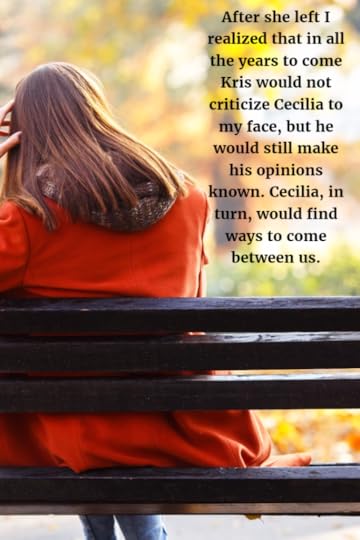 Meeting Kris: The summer before my senior year in college Cecilia, already on her way to the top, arranged an internship for me with Max Filstein a famous celebrity photographer. With those credentials after graduation I was hired to document a charity’s work throughout the Caribbean. In between assignments I free-lanced.
Meeting Kris: The summer before my senior year in college Cecilia, already on her way to the top, arranged an internship for me with Max Filstein a famous celebrity photographer. With those credentials after graduation I was hired to document a charity’s work throughout the Caribbean. In between assignments I free-lanced.
During one of those weeks, I traveled to my home state, where Palm Beach was suddenly the focus of activity after the disputed presidential election. More important, I met Kristoff Lenhart as I took photos of an argument between attorneys from the two different camps. He asked me not to record what was turning into a juicy spat, and I took them anyway. We met for drinks that night and months later I moved to DC to be near him.
Despite the way our lives quickly meshed, Kris failed one important test. Cecilia came to town. I could have arranged a meeting earlier, but Kris was like a special gift I didn’t want to share with my more popular big sister. Even more important I was afraid Cecilia wouldn’t like anybody I loved, that the competition for my affection and attention would annoy her. I was almost sure the two wouldn’t like each other, and they didn’t.
After she left I realized that in the years to come Kris would never criticize Cecilia to my face, but he would still make his opinions known. Cecilia, in turn, would find ways to come between us.
***
 Marriage: When did I begin to feel unhappy? I’m not sure I can pinpoint it. I was so busy at first I didn’t realize anything was missing. The children weren’t difficult and they were healthy. Still, I missed Kris. Each year he seemed to spend less time at home. Kris was determined to be the man his father was not, a great provider and a steady fixture in our lives. He was proving himself invaluable at his firm, and he swiftly made partner.
Marriage: When did I begin to feel unhappy? I’m not sure I can pinpoint it. I was so busy at first I didn’t realize anything was missing. The children weren’t difficult and they were healthy. Still, I missed Kris. Each year he seemed to spend less time at home. Kris was determined to be the man his father was not, a great provider and a steady fixture in our lives. He was proving himself invaluable at his firm, and he swiftly made partner.
Kris and I talked about his absences, the long business trips, the late night client dinners, but he insisted that was the price we paid. We drifted apart. I filled in by being both mother and father to Nik and Pet.
I made it through those years because of Cecilia and my friends. Cecilia was a constant presence, too constant for Kris’s tastes but perfect for my own. She breezed in whenever she could with expensive gifts for our children, who adored her. When she was with them she was totally present, as she had always been with me.
Kris wasn’t happy, but Kris and Cecilia are always polite to each other. Their psuedo-tolerance comes down to insecurity. Neither of them is sure who will win if I am forced to choose.
***
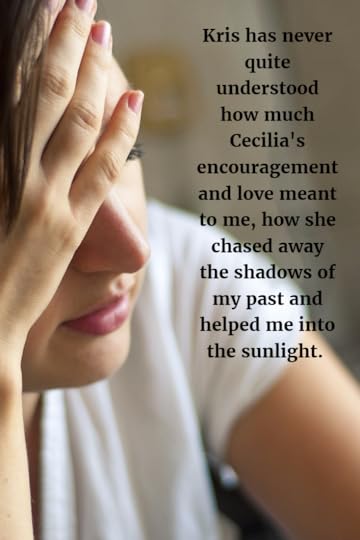 An Uncertain Future: I realize it’s past time for me to take my future into my own hands. Kris doesn’t understand. He thinks I only want to work on the foster care documentary so I can tag along to photograph Cecilia’s life. He forgets it was my life, too. Cecilia’s life and mine intersected for years. She says she needs to go back and confront her demons. I’m not sure I don’t, as well. This life with Kris and the kids isn’t the only one I’ve had. And even if I can’t remember the accident that nearly killed me, I bet that life was flashing in front of my eyes as the SUV got closer.
An Uncertain Future: I realize it’s past time for me to take my future into my own hands. Kris doesn’t understand. He thinks I only want to work on the foster care documentary so I can tag along to photograph Cecilia’s life. He forgets it was my life, too. Cecilia’s life and mine intersected for years. She says she needs to go back and confront her demons. I’m not sure I don’t, as well. This life with Kris and the kids isn’t the only one I’ve had. And even if I can’t remember the accident that nearly killed me, I bet that life was flashing in front of my eyes as the SUV got closer.
***
I hope you’ve enjoyed this peek into the lives of the characters of When We Were Sisters. While I write these for myself, I’ll enjoy sharing excerpts with you over the next few weeks.
Next Wednesday: Kris, Robin’s husband.
Click here for bookstore links.
The post When We Were Sisters: Robin Speaks appeared first on Emilie Richards.
April 30, 2016
Sunday Inspiration: Forgiveness

Do you find that one of the most difficult struggles in life is learning to forgive?
Proman is speaking at a local church this morning on the topic of forgiveness. You can see why this is on my mind.
“Life is an adventure in forgiveness,” writes Norman Cousins, and since nobody gets through life unscathed, that’s certainly true. What can be more adventurous than learning to let go of pain, anger and pride so we can attempt to heal a relationship — and ourselves?
Proman likes to tell a story about a man who is struck by an arrow from an unknown assailant. Rather than tending to the wound, he refuses to remove the arrow until the archer is found and punished. In the meantime, the wound festers until finally the poison kills him.
Have you suffered a spiritual or emotional wound and refused to forgive someone who hurt you? Worse, has the wound seeped poison for a lifetime?
Both religious leaders and psychologists tell us that forgiveness releases the suffering, the sorrows, the burdens of pain and betrayals and moves us towards love. On the occasions when I’ve forgiven freely–usually after someone has apologized, another subject to consider–I feel better about the world and myself, worthy goals for certain.
Does this mean I forgive easily and well. No, it’s a constant struggle, but the ability to forgive “just because” is one of those virtues I’m working toward. At the risk of being trite, two popular sayings help me the most.
Don’t sweat the small stuff–it’s all small stuff.
Don’t take it personally.
I’m guilty of forgetting both. But I’m trying to remember.
So is there someone you need to forgive? How can we all take a step towards healing?
The post Sunday Inspiration: Forgiveness appeared first on Emilie Richards.
April 27, 2016
Helping Authors: You’ll Be Surprised What You Can Do
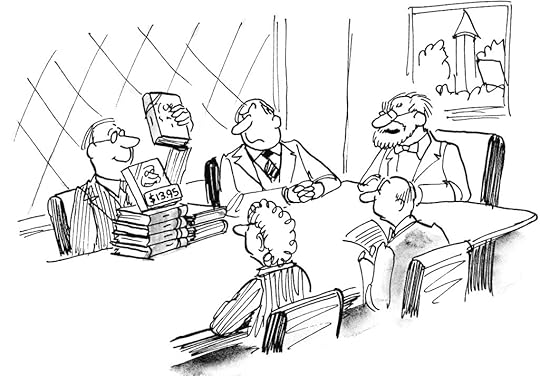 Almost two years ago I found this post about helping authors and thought the idea would be fun to use here someday. Jen Malone listed several things readers can do to help their favorite authors. I thought I’d share some of my own, inspired by some of hers, with you today. These are quick and easy, and most of them don’t involve opening your wallet.
Almost two years ago I found this post about helping authors and thought the idea would be fun to use here someday. Jen Malone listed several things readers can do to help their favorite authors. I thought I’d share some of my own, inspired by some of hers, with you today. These are quick and easy, and most of them don’t involve opening your wallet.
You will notice I have chosen to use “her” as my favorite pronoun for this post. The reason should be transparent. So without further adieu. . .
Some surefire ways for helping authors, thereby encouraging them to write more books, more often, with more enthusiasm.
First: Buy her books. You knew that, right? You didn’t need to read my blog for that one, but the good news? Books are reasonably priced, at least most of the time. Let’s add buy her book as a gift for a special friend here. Books make great gifts, and unlike candy and flowers, don’t add pounds or trigger allergies.
Second: Buy her books the moment they arrive at bookstores. That’s a bit more esoteric, right? The reason is actually simple. Publishers are silly creatures who pay more attention to lists than to anything in the universe. (I am allowed to exaggerate because this is my blog.) Writers who make bestseller lists get new contracts. That, too, is simple. If you like a writer, you want to read more of her books. Unless she is publishing independently (more and more authors are) she will need a contract to write more books.
Third: Inspire your public library to buy her book. A sale is a sale, and this is a wonderful way to reach more new readers. How can you inspire librarians to love your favorite author?
Request the book at your library. (Jen shows a request form from her own local library. Yours will have something similar.) Go in armed with title, author (spelled correctly–Emilie has an ie at the end, right?), publisher, and the ISBN # (you can find this online at bookstores or the author’s website). If you don’t have all of that, have as much as possible.
Mention the author to librarians whenever you can. Librarians have the memories of elephants. This is a scientific fact.
Suggest an author as a possible speaker if the librarian supports programming.
Fourth: Speak positively about the book online. Where?
Goodreads (you can both review and vote for books here.)
Instagram, Tumblr, Google Plus and so on.
Online book communities are blooming. If you’re part of one and you’re in your helping authors mode, mention the book and say why. Comment on book blogs, and don’t be afraid. Readers are hungry for new books they might enjoy.
Fifth: Review the book as close to its publication date as possible. Where?
Amazon
Barnes and Noble
eBook stores like iBooks, Kobo, Smashwords, Draft2Digital
Any other page or bookstore that takes reviews.
Good reviews make a difference when a reader is looking for a new read. If you didn’t like the book? Ignore this.
Sixth: Suggest the book as a selection for your favorite book club. Then see if the author will Skype, Face Time or even make a personal appearance during the discussion.
I know that you, too, have a million things to do every day. After all life’s best when you’re busy doing things you love. But if the opportunity presents itself, helping authors isn’t all that hard. You have the power to inspire more books you can cherish. I can say with assurance that your efforts will be much appreciated.
The post Helping Authors: You’ll Be Surprised What You Can Do appeared first on Emilie Richards.
April 23, 2016
Sunday Inspiration: Love Opens the Doors
 Last Sunday I wrote about romance and love, and maybe it’s time for a little humor.
Last Sunday I wrote about romance and love, and maybe it’s time for a little humor.
Have you heard this: “I love being married. It’s so great finding that one special person you can annoy for the rest of your life.” Or this one: “My wife and I lived happily for twenty years. Then we met each other.”
We tend to joke about those parts of our lives we have the most difficulty understanding. But it’s not a joke that so many marriages end up in divorce, and many others are unhappy or even agonizing. That’s a shame because love is one of the most important parts of our lives, isn’t it? We crave intimacy from the moment we’re born. Sadly many of us find that it’s much more difficult and painful to make love stay than we had ever imagined.
The UCLA Family Studies Center (I received my master’s degree from a similar program in Virginia) researched 1500 couples who had been together successfully for more than five years. Here were the common characteristics they found:
There was a physical attraction between them.
They were in the relationship out of clear choice rather than out of obligation or fear of being alone.
They shared fundamental values, beliefs, interests, and goals.
They were able to express anger clearly and directly and they resolved differences through communication and compromise.
They experienced laughter, fun, pleasure, and play with each other.
They were able to express support for each other and support each other’s activities, interests, and careers.
Does this sound familiar? Are these challenges you’re working on or need to?
The poet, May Sarton, writes that, “Love opens the doors into everything.” Now we need to look for and find the key that opens our heart to love.
Is this important in your life? Is the key within reach?
The post Sunday Inspiration: Love Opens the Doors appeared first on Emilie Richards.
April 21, 2016
When We Were Sisters: Cover Shoot and Compromises
Yesterday I told you a bit of the “science” behind covers, as well as the part authors play or don’t play in the conception and finalization. Today, a bit about the cover of When We Were Sisters and what an author, art department, editorial, marketing and various other players did to get there.
Really, shouldn’t this be simple? It’s what, a photo, your name and a title. How hard is that?
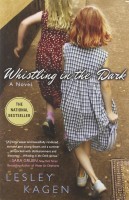
I liked the movement in this one, although as I say here I’m not happy with backs turned in general.
Before I go even a sentence further, I do need to admit that now that I’m self-publishing my backlist with new covers, I better understand the problems with getting a cover exactly right. At the moment, my cover designer and I are going over and over ideas for a book I wrote years ago. Unfortunately some of my ideas made scrunch-your-face-in-horror covers. Others were boring or confusing. We’re still working.
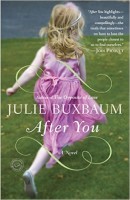
I loved the way this child took up the cover. I needed two girls, but I sent this to show more child, less scenery.
Luckily when the time came to create a cover for When We Were Sisters, everyone seemed in agreement. When We Were Sisters is the story of two foster sisters, Robin and Cecilia, reaching back into their past as they film a documentary on the foster care system. My job was to convey that story and the appearance of the characters to the art department.
While I sent in sample stock art for my characters as they appear in the novel, I also sent photos of them as children. In addition I sent covers of bestselling novels picturing children. (Two of those appear here.) I also sent photos with poses I liked, and stock art with no characters that depicted some other aspect of the story.
My editor thought children were the best idea, and I agreed. We were on our way.

Using a stock photo comp I did a quickie mock-up of how my idea might look.
The author tries to become a cover artist.
As I waited for the cover to unfold I found a photo I particularly liked. And since Robin is a photographer, my editor and I liked the idea of creating a Polaroid version for the front cover, like a photo she might have shot in the 1980s. Then perhaps another crisper photo of the two as grown women on the back. I made a crude mock-up to send along.
The art department didn’t buy my idea. But they, too, liked the idea of children on the cover. A step in the right direction.
We were making progress. Months went by and then I got my first look at the sample cover. I would love to say I was thrilled, but I wasn’t. In fact I was terrified. And yes, literally, because my first thought was that I needed to dive into my computer and pull those two unfortunate girls to safety. The little girls were holding hands and walking into smoke, or clouds. One author friend asked me if this was a book about two little girls in the after-life. Another asked if I was writing horror.
I’ll digress just a bit. Most of my covers lately (seven + in fact) have had women with their backs turned to the camera. I am tired of them. A man on Twitter called them the “White women facing backwards” covers, bless him. I hoped that since we were using children, we would see faces or at least parts of faces.
Authors and publishers don’t always agree. Nobody with a say–and lots of people are involved in creating cover art–had my concerns. They were convinced this was the right cover. I was equally convinced none of my readers would pick it up. I needed a cover that radiated the love between these little girls, love that carried them into adulthood and never wavered. My publisher wanted to express the difficulties of growing up in foster care.
That moment in which the artists and the novelist find common ground in a cover shoot. . .
After much head-banging and many passionate emails I got a welcome surprise. The art department decided to do an actual cover shoot for When We Were Sisters. They had stopped looking for stock photos (photos from sites like iStock, Shutterstock, etc.) and agreed to ditch the photo that was keeping me up nights. They were going to go out in the field, find models, dress them appropriately and take photos for the cover.
Glory hallelujah!
These days a cover shoot is unusual. Did my publisher know that 2015 was my thirtieth anniversary of writing for them? Probably not, but a cover shoot for what I thought was a special book, felt like a gift. We were going to get the right cover after all!
Let me point out that you can see actual candid photos of that day right here, so I won’t include them. Go to that link for a honest to goodness sneak peek at a real cover shoot. You’ll be delighted you took the time.

Some of the dresses I was asked to choose from.
The fun began immediately. I was to be included in choices. Was it: A) The griping? B) The anniversary? C) Sheer goodwill?
I decided it was “C.” They wanted me to be happy. I received photos of clothing, models, scenery, poses. Nobody promised all my choices would be used, but they said they would do their best. Robin and Cecilia were children in the 1980s, so I had fun looking at styles of that decade. I chose several dresses for each girl from the many possibilities I was offered, and the girls on the cover showed up wearing them. I chose the models, too, and gave input into the scenery.
Logistics and pesky details. . .
How does an art department in Canada take photos of little girls in Florida? Well, Cecilia and Robin lived in central Florida in ranching country, and fields would be appropriate, as would woods. We didn’t need beaches or palm trees, and the clever people in charge found locations that worked. They took a selection of photos and created mock-ups using several of them.
Yesterday I showed you one. As I said then, that shot was my favorite by far because I believed it best told the story. At that point nobody but me had seen the finished manuscript, so I felt I had an edge. Imagine my surprise, though, when I received their preference, a cover almost exactly like the one I had disliked so strongly, only with girls who looked like my characters. They really were convinced the girls walking into danger was appropriate for the story. The cover was mostly black, white and gray and yes, I was not happy.
Compromise and consensus. If politicians would only learn from our example.
The world runs better with compromise and consensus. We all knew that. Once again I told them how wrong I felt this cover was. All that trouble, all those gorgeous photos of the little girls, and once again we were seeing backs. And worst of all, my readers would be afraid to pick up the book.
But wait! This is a story with a happy ending, so keep reading. The next version I saw was the final one. The art department kept the pose they’d been set on, but everything else changed. The colors, the feeling, and a blue sky with billowing white clouds ahead.

Our final cover graced by a Diane Chamberlain quote. I couldn’t be happier.
Here’s what I wrote my editor when I saw it:
“I think it’s gorgeous! I think it’s perfect. I think you really tried to please me and absolutely did. This says everything about the book while still making it clear they’re looking toward the future–or as much as a photo might. I am just delighted. Thank you both, thanks to everyone on the team for taking a second look (possibly third and fourth) and tweaking, for making this a cover that will tell the story and, I strongly believe, sell the book!”
Effusive much? Who cares? I meant it.
Did you know a cover took this much time, this many people, and a little heartache? But not only did I appreciate the final version, the art department took my editor’s suggestion and put the photo of the girls hugging on the back.
Once again, enjoy a sneak peek and candid shots of the shoot right here.
Thanks so much for reading along. This was a fun post to share. I’m enjoying yesterday’s comments, including two from one of the young models’ mom! Let me know your thoughts, too.
And stay tuned for more special content as launch date approaches, including something wonderfully musical (Cecilia is an internationally known singer-songwriter) and behind the scenes glimpses of my characters.
To preorder When We Were Sisters:
Amazon, iBooks, Barnes and Noble, Books A Million, Kobo as well as your favorite independent bookstore. The book will be published in hardcover, paperback and ebook versions, so choose your favorite way to read.
(I am an affiliate of Amazon and iBooks but encourage you to buy wherever you most enjoy shopping, and local is always good.)
The post When We Were Sisters: Cover Shoot and Compromises appeared first on Emilie Richards.
April 19, 2016
When We Were Sisters: Anatomy of a Book Cover
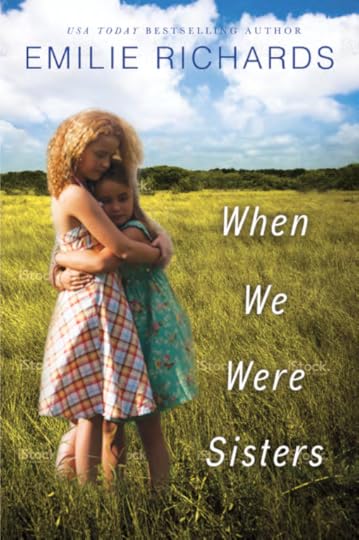
THIS MOCK UP COVER WAS MY FAVORITE AND THE PHOTO NOW GRACES THE BACK COVER.
You’re not surprised, are you? As a reader you may even have strong feelings about a book cover in your collection.
Maybe you have a preference for an icon cover (an object that relates to the book, like a pearl necklace or a Japanese lantern.) A clinch (two people in positions ranging from chaste to compromising.) Your favorites might be characters in action, or in repose, pictures of scenery, houses, horses. You might prefer pastels or jewel tones or even black and white.
And yes, readers sometimes refuse to pick up a book if they don’t like the cover. Ask me how I know? I’ve been there. I’ve even bought books solely because of their covers. It happens to the best of us.
So what’s behind book cover choices?
Let’s be honest here. Publishers usually pay more attention to what’s selling than to artistic imagination and merit. Wild experiments are often failures. A story circulated years ago about the covers of gothic novels, which were nearly always shades of blue. A weary publisher tried a green book cover, and the book sales tanked. They pulled the book and reissued the same cover in blue. Book sales boomed.
Ever wonder why so many book covers in your favorite genres look alike? That’s easy. Publishers know that readers have limited time. Clues are required. Romantic poses indicate a love story. Horses and ten gallon hats, a western. Dark, moody scenery probably foretells a thriller or mystery.
Where does the author fit in, or does she?
I am always asked for my ideas before covers are designed. Quite honestly my ideas are rarely used. In fact most of the time my input seems to matter most at the end, when I dig in my heels and request revisions on their ideas. I suspect there’s a dartboard somewhere in Toronto or New York with my picture on it. I understand. But a book cover like a title (you remember all those title blogs I’ve written?) matters to me. A lot.
In all fairness, I am not an artist. I envision things that are impossible, or silly in execution, or even unattractive. Not always, mind you, but sometimes. And it’s not my job to know what’s selling best at the moment. For this I need my publisher.
Part of the cover process includes telling the story so the cover will accurately reflect the book. Then after paragraphs of description of scenes and characters, I’m allowed to explain what I’d like to see. So what did I want for When We Were Sisters, arriving at bookstores in June?
When We Were Sisters, the good, the bad and the ugly.
Tomorrow, I’ll tell you my part of this story. But even more fun? The art department at Harlequin Mira will be blogging about my cover, and about a unique approach to finding a look and a depiction we could all agree on. I’m so delighted they’re doing this because you’ll enjoy this special and unusual peek. They will take you behind a cover shoot using the two little girls on the cover. (The photo above was my favorite and ended up on the back cover.)
I’ll tell you more about that decision tomorrow. But you’ll see other photos from the shoot and read the story from the art department’s perspective.
You’ll find the art department’s link here, tomorrow at noon, EST. And mine will go up here at the same time.
So come back at noon tomorrow, when I’ll tell you more about how the cover came to be, from my perspective, and you can then hop over and view the art department’s version. This is a unique opportunity and I thank my publisher for sharing the process with me and especially, with you.
Enjoy, and let me know what you think about the cover, the process and the final results.
The post When We Were Sisters: Anatomy of a Book Cover appeared first on Emilie Richards.
April 16, 2016
Sunday Inspiration: Romance and Love
 I’ve been thinking about romance lately.
I’ve been thinking about romance lately.
Not surprising for a writer of women’s fiction. Actually, I wrote 50 romance novels before moving into a broader genre with more options for character development and plot.
But you may notice that romantic relationships are always at the heart of my novels because nothing is more important to me. For some, romance is something of an outdated concept. But without authentic romance, it’s clear to me that relationships have little chance of surviving and happiness will always be just beyond our grasp.
Perhaps the best definition of romance is taking the time to support, appreciate, listen to, honor, and celebrate the person you’re with.
Too many relationships get stuck in petty bickering and recriminations that not only destroy the relationship but seriously damage the souls of the people involved. Did you know that research shows the success or failure of a marriage can be accurately predicted based on whether contempt exists in the relationship, and whether words are used as weapons to humiliate and dehumanize?
When we lavish love on each other and forgive mistakes, not only does the relationship become healthier and happier but so do the people involved.
So let’s hear it for romance and love!
What’s romantic about your relationship? Happen overnight or little by little? However it did, if it did, be sure to celebrate.
The post Sunday Inspiration: Romance and Love appeared first on Emilie Richards.



